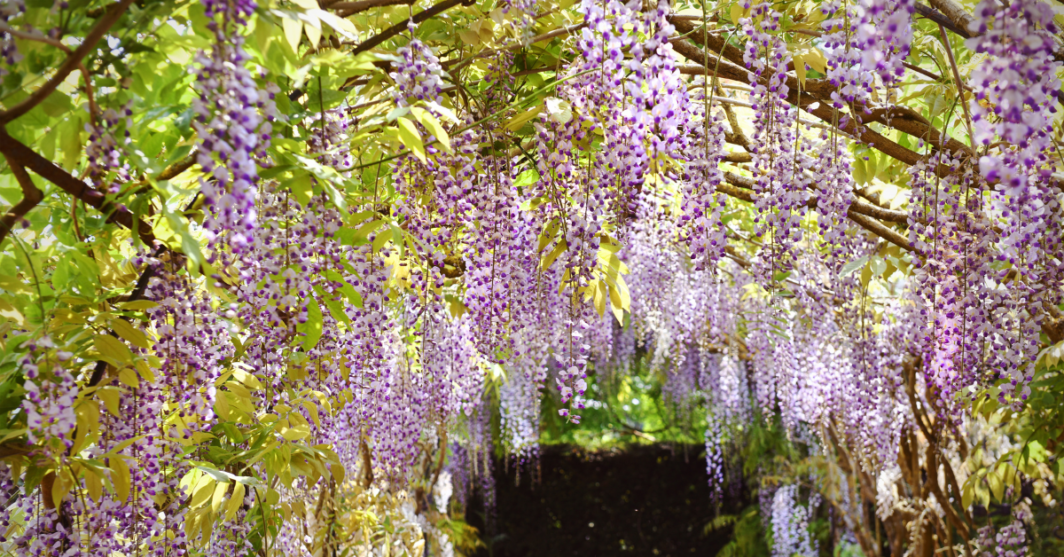Wisteria, is the beautiful, delicate scented climber that graces many a wall here in the UK. Ideal for training up structures, pergolas and trees, it’s a popular plant and loved by many. Our own is located outside the Library Bar & Terrace and is admired by staff and guests alike – it is a truly gorgeous example of this beautiful plant. Here are our top 10 facts about this popular climber:
#1: It is part of the legume family
The legume family is also home to peas, beans, lentils and clover!
#2: English botanist Thomas Nuttall (1786-1859) named the Wisteria
Along with at least 92 others. He was born in Long Preston, Yorkshire, but travelled to the Great Lakes of North America in 1810, with fellow botanist John Bradbury.
#3: It is named in memory of Dr. Caspar Wistar
Dr. Caspar Wistar (1761-1818) was an American physician and anatomist. He was an early promoter of vaccinations, cousin of American Revolutionary diarist Sally Wister and also a friend of Thomas Jefferson.
#4: Two of the most popular Wisteria can be identified by how they climb!
When it twines its stems clockwise (seen from above), it’s probably a Japanese Wisteria (W. floribunda). The Chinese Wisteria (W. sinensis) however, twines counterclockwise – and this is the most common one in the UK.
#5: There are ten species
They are native to China, Korea, Japan, and the Eastern United States. Chinese Wisteria was the most common species in the UK for many years, until other colours and species were gradually introduced.
#6: The world’s largest known Wisteria is in California
The Chinese lavender variety is in Sierra Madre and was planted in 1894. It’s been recorded to be over 1 acre in size and weighing in at 250 tons!
#7: It can take decades to bloom
Although hardy and fast-growing, Wisteria grown from seed can take decades to bloom. Gardeners are therefore most likely to buy and grow plants from root cuttings or grafted cultivars.
#8: Wisteria needs strong support
If left to grow unsupported, it will create a mound. It needs strong supports, as it’s both strong and heavy, often producing wrist-thick trunks and stems. If left unaided, it can cause damage to thin trees, latticework, gutters and downpipes, due to the fattening of its stems as they grow.
#9: Wisteria loves rose fertiliser
Rich in flower-producing potassium and magnesium, a generous helping each March will ensure regular flowering and healthy growth.
#10: Pot and container grown Wisteria is rarely successful!
They are greedy for water and food. Ideally you need a sunny wall to grow Wisteria, but if not, opt for a free-standing ‘standard’ on a 5 foot bare stem – as suggested by Alan Titchmarsh himself!
To read more about this beautiful climber plant, visit the Royal Horticultural Society here who have advice and tips on how to grow your own Wisteria.
You can read more about the flowers and plants in our gardens here https://grimsdyke.com/10-reasons-love-tulips/ or https://grimsdyke.com/alliums/
And remember our gardens are open all year round and visitors are most welcome.


